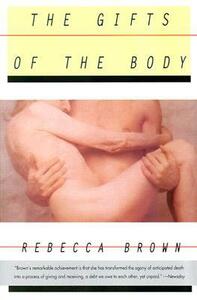Take a photo of a barcode or cover
[1994] Notes to self…Designated as fiction but the author was a home-care worker and I couldn’t help reading it as a memoir. Our (unnamed, as far as I remember, which also helped me think of her as Rebecca) narrator is a home-care worker who works for an agency that takes care of people with AIDS. More accurately, people who are actively dying of AIDS. Used clear, simple, unadorned style to pack a powerful emotional punch. She shows us how she cares, in speech and in actions, about people she has newly met and in very difficult circumstances, and we care, too. Could I do that job? Could I go to work knowing my heart would break a little more each day? I like to think I could, but I honestly don’t know. Read at first like short stories, but the characters recur and a complete story emerges.
emotional
inspiring
reflective
sad
slow-paced
Plot or Character Driven:
Character
Strong character development:
Yes
Loveable characters:
Yes
Diverse cast of characters:
Yes
Flaws of characters a main focus:
No
emotional
reflective
This is told in 11 short chapters, snapshots in the narrator's experience as a nurse's aid for people with AIDS in the early 90's, each focused on a particular motif. We revisit each character from the first half of the book in the second half in different ways, giving the book a bit of continuity and a symetry.
The writing style has simple descriptions, yet the emotion still comes right through. It very much mirrored the feeling in that sort of situation; when you're trying to distance your emotions to get what needs to be done, to not feel the overwhelm.
This sort of literature is incredibly important. I think today, despite so much information being at our fingertips, there is a separation from history. The AIDS epidemic isn't really taught about, but it is so important to understand a lot of what is happening now.
I will say, obviously this has medical content and death, but there is also some ableism. Some of it is passive word choice, but also mostly from the narrator's reflection (and most of these thoughts are also critiqued by the narrator in-text).
Graphic: Ableism, Cancer, Chronic illness, Death, Medical content, Grief
Moderate: Homophobia, Vomit, Dementia
Discussion of assisted suicide
emotional
inspiring
reflective
fast-paced
Plot or Character Driven:
Character
Strong character development:
Complicated
Loveable characters:
Yes
Diverse cast of characters:
Yes
Flaws of characters a main focus:
Complicated
this was beautiful and such an interesting interrogation of what makes care ‘good’
emotional
reflective
sad
slow-paced
Plot or Character Driven:
Character
challenging
dark
emotional
sad
fast-paced
This shit wrecked me.
emotional
reflective
sad
medium-paced
Plot or Character Driven:
Character
Strong character development:
N/A
Loveable characters:
Yes
Diverse cast of characters:
Yes
Flaws of characters a main focus:
No
I have never read a book written so simply but with so much emotional heft. It’s raw and unfiltered and accessible. There are so many stories about this subject but none are quite like this - it almost defies description.
This was a tough book to track down, but I’m glad I did. You will be too. Bring the tissues.
This was a tough book to track down, but I’m glad I did. You will be too. Bring the tissues.
This book made me cry until there were no tears left, just sounds. I feel raw and ragged. This is an incredibly important book about a period of history that we can not afford to forget.




